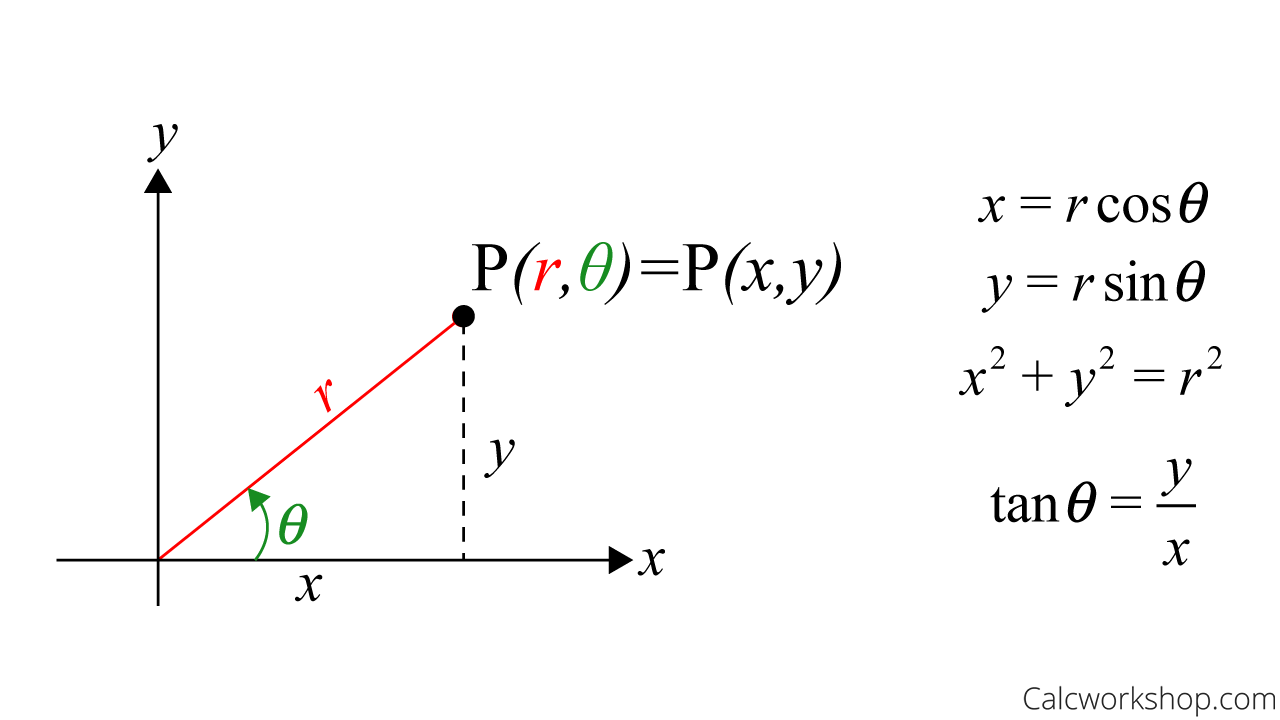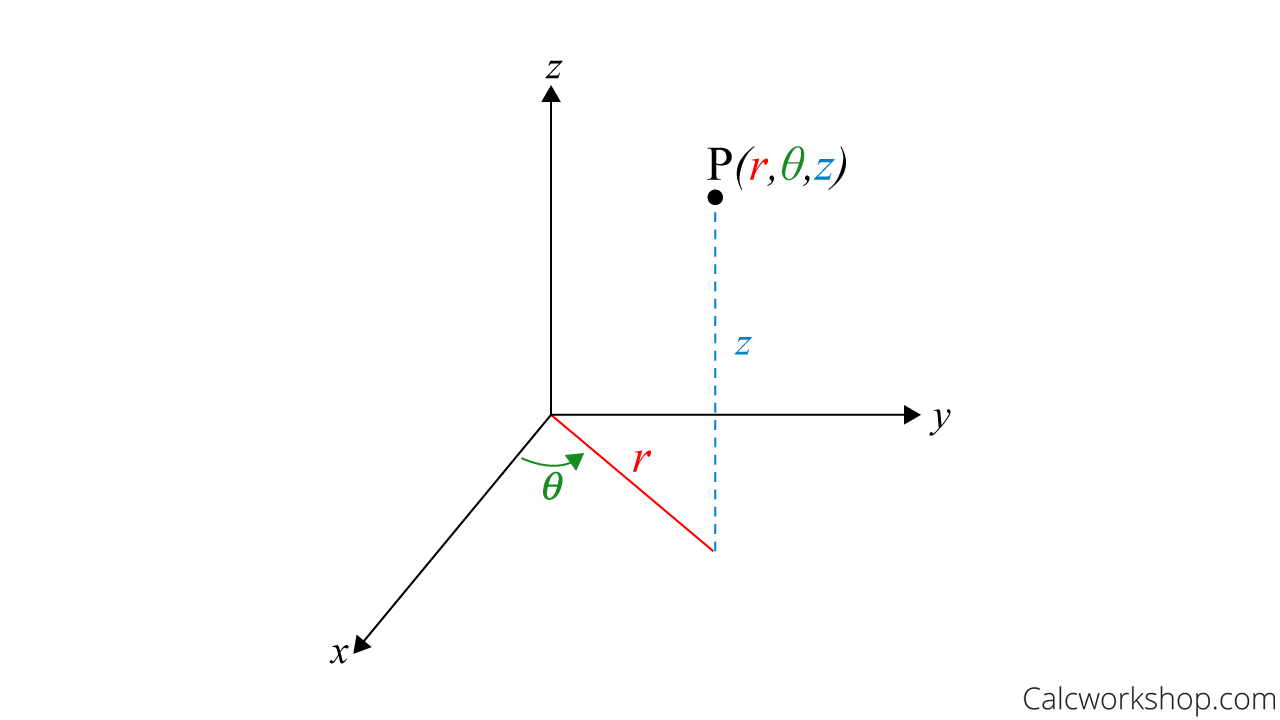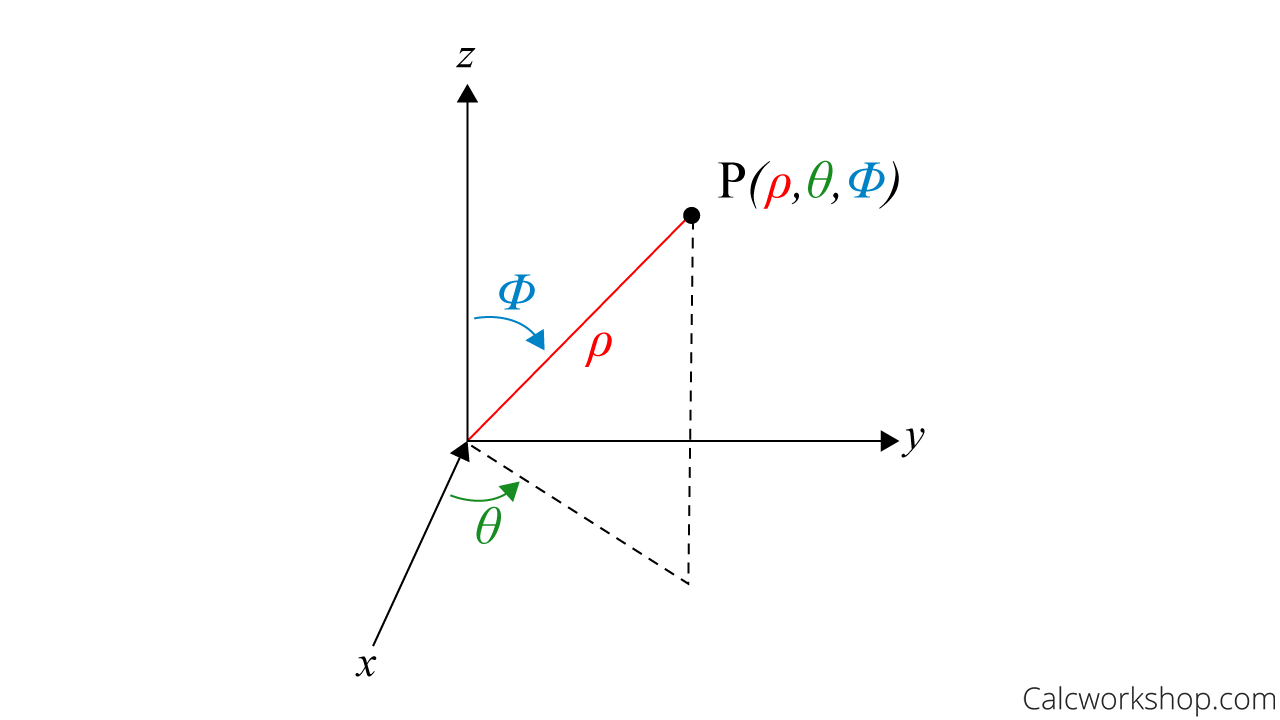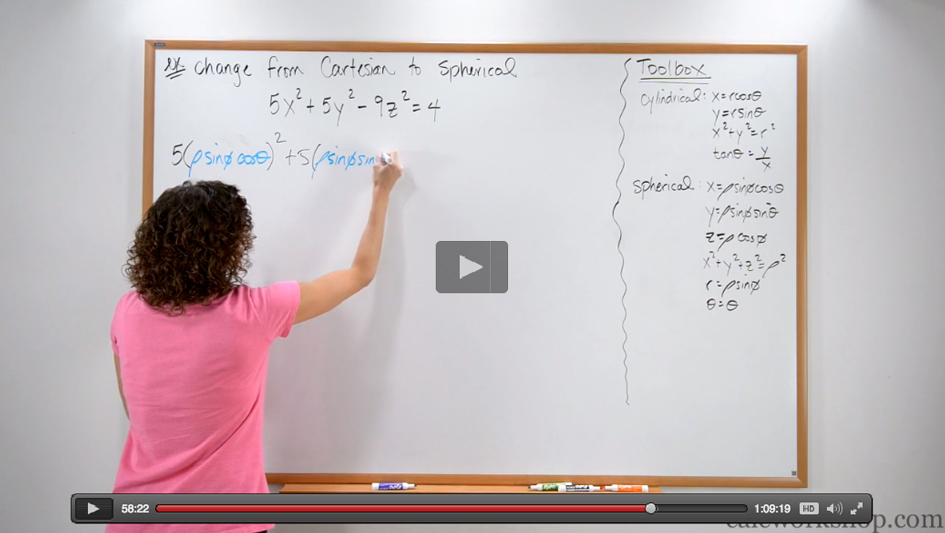Have you ever encountered a task or a situation where you didn’t know what to do and needed help?

Jenn, Founder Calcworkshop®, 15+ Years Experience (Licensed & Certified Teacher)
Sometimes looking at something from a different angle or perspective is all we need to set things to rights.
And that is why Cylindrical and Spherical Coordinates are so convenient.
They allow us to look at commonly occurring surfaces and solids from a different point of view — making things easier for us to solve and evaluate such things as volumes and triple integrals.
Okay, so in plane geometry, we use the Cartesian coordinate system where everything is expressed in terms of
But there are instances when Cartesian coordinates (rectangular coordinates) are too cumbersome or difficult to use, and we need an easier or more helpful way to represent an object.
Two such transformations are the cylindrical and spherical coordinate systems.
Rectangular To Polar Coordinates
But first, let’s remind ourselves of polar coordinates, as they will play a vital role in understanding these two new coordinate systems.
In Polar coordinates, a point in a plane is determined by a radial distance,
And we recall, we use the following equations to help us convert back and forth.

Polar Coordinate To Cartesian
But seeing how polar Coordinates is only for two dimensions, we need to adapt this ever so slightly for three-dimensional space.
Cylindrical Coordinate System
In the cylindrical coordinate system, a point

Cylindrical Coordinate System
Notice how Cylindrical Coordinates is just Polar coordinates but with a z-component!
This means, converting back and forth from rectangular coordinates to cylindrical coordinates is just as easy.
Cartesian To Cylindrical
Example #1 – Rectangular To Cylindrical Coordinates
For instance, let’s convert the rectangular coordinate
Our goal is to change every
and into and , while keeping the z-component the same, such that . So, first let’s find our
component by using .
Next, we will find
by using .
Therefore, the rectangular coordinate
can be written in cylindrical coordinates as:
Example #2 – Cylindrical To Rectangular Coordinates
Now let’s look at a problem where we wish to find a rectangular equation for a surface whose cylindrical equation is given as
Our goal is to change every
and into and , while once again, keeping the z-variable untouched. Because we know that
we can make a direct substitution.
Now, all we have to do is simplify.
So, the ellipsoid written in cylindrical coordinates
can be rewritten in rectangular coordinates as:
Not too bad, right?
Common Surfaces
Together in the video, we will work through numerous examples of transforming rectangular and cylindrical coordinates and equations and quickly identifying common surfaces such as cylinders, planes, and cones.
Spherical Coordinate System
Now there are times when both Rectangular and Cylindrical coordinates just don’t cut it. For example, when dealing with gravitational or electrical fields spherical symmetry is displayed, and the use of an alternative coordinate system, namely Spherical Coordinates, is preferable.
So, let’s change our perspective once again and discover the intricacies of the Spherical Coordinate System.
Spherical coordinates

Spherical Coordinate System
It is important to note that
Cartesian To Spherical
So, how do we convert back and forth from rectangular coordinates to spherical coordinates or from cylindrical coordinates to spherical coordinates?
By using the following formulas:
Example #1 – Rectangular To Spherical Coordinates
Alright, so let’s practice using our equations to convert from rectangular to spherical coordinates.
Suppose we wish to convert the rectangular coordinate
Well, our goal is to change every
, , and into , , and , such that . So, first let’s find our
component by using .
Next, we will find
by using .
Lastly, we need to find
by using and our value we found earlier.
Therefore, the rectangular coordinate
can be written in spherical coordinates as:
Example #2 – Cylindrical To Spherical Coordinates
Now, let’s look at another example.
If the cylindrical coordinate of a point is
This time our goal is to change every
and into and while keeping the value the same, such that . First, we will find our
value. If we know that
, then we can easily say the following.
Therefore,
Next, we will calculate
using the equation , and our recently found .
So, the cylindrical coordinate
can be written in spherical coordinates as .
Awesome!
Common Surfaces
And don’t worry. We will walk through countless examples of how to transform rectangular, cylindrical, and spherical coordinates and easily identify common surfaces such as spheres, half-planes, and half-cones.
There’s a lot to discover, so let’s jump right into the lesson!
Video Tutorial w/ Full Lesson & Detailed Examples (Video)

Get access to all the courses and over 450 HD videos with your subscription
Monthly and Yearly Plans Available
Still wondering if CalcWorkshop is right for you?
Take a Tour and find out how a membership can take the struggle out of learning math.